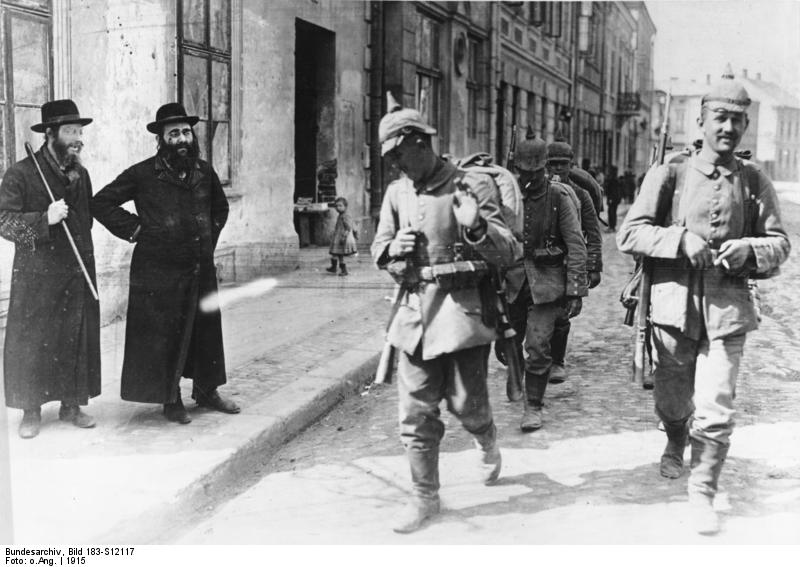The partitions of the Polish-Lithuanian Commonwealth, which took place in 1772-1795, brought an end to the existence of an independent Polish-Lithuanian state, which was the most numerous concentration of the Jewish diaspora in the 18th century. At that time, about 50% of all followers of Judaism in the world lived in this area. After the third partition, there were about 400,000 Jews in Russia, approximately 200,000 in Austria, and approximately 180,000 in Prussia.
For the partitioning states, especially Russia and Prussia, and to some extent also for Austria, such a large, compact and economically important group of Jews was a new phenomenon, often viewed unfavourably.
Along with the partitions, Jews’ legal status changed, which resulted in rapid social, economic and conscious transformations. Earlier in the Commonwealth, Jews were an autonomous quasi-stratum whose position in the state was determined by a system of general, local and individual privileges. The partitions meant moving under the power of a centralized absolutist regime, with all the consequences of direct submission. Through the new laws issued in all three partitions, the rulers aimed not only at regulating and unifying but most of all at transforming the Jewish population and adapting it to the structure of the absolutist monarchy. An important change introduced by the new legal regulations was the abolition or limitation of the kehilla’s autonomy. Jewish communities lost their function as corporations and became religious associations. Therefore, the partitions meant for the population not only the loss of privileges but also unknown before interference by the state authorities in individual and family life.
Even more shocking for the traditional Jewish community was the introduction of compulsory military service. Previously, Jews performed various military duties in the defense of cities in the former Polish-Lithuanian Commonwealth, but their direct incorporation into the ranks of the army always aroused opposition. Service in the army usually made it impossible to comply with the basic rules of the Jewish religion: eating kosher food, obeying the ban on working on the Sabbath and holidays, ritual washing, etc. The Jewish population, however, offered various forms of alternative service or paid taxes that replaced the duty of military service. There were cases of voluntary military involvement with the most famous example of Berek Joselewicz (1764-1809), who headed his unit during the defense of Praga in Warsaw during the Kościuszko Uprising (1794), and then continued the military route with Napoleonic troops and died in a skirmish with Hungarian hussars near Kock. Representatives of the Jewish community also participated in the fights of Polish troops in the November and then January Uprisings. 43 Jewish doctors and several hundred volunteers took part in the November Uprising, mainly in the squadrons of the Kalisz and Masurian regiments. Three people were awarded the order of Virtuti Militari. However, this did not apply to the wider groups of Polish Jews.
Few Jews joined the army voluntarily, because an officer’s career in the armies of the partitioning powers was unavailable to them. The duty of service in the Habsburg army was introduced in 1788 by Emperor Joseph II. In Prussia, the duty of military service concerned only those Jews who obtained citizenship, and the Jewish population in the partitioned Prussian territories did not obtain it until 1848. The most difficult conditions of military service were in Russia. It is true that in the Kingdom of Poland, the conscription set for 1816 practically did not take place: first, you could buy out individually, and two years later a lump sum was negotiated for the entire community. However, in 1827 Tsar Nicholas I introduced the obligation of 25 years of military service for the Jewish population, and the contingent of Jewish recruits was larger than in other groups of the population. The military obligation did not cover all conscripts, but only a small random number of people who were drafted into the army for many years.
Jewish religious communes were responsible for the delivery of recruits, and in the absence of a sufficient number of unmarried men over 18, the communes had to provide children over the age of 13 who, before reaching the age of majority, served in auxiliary cantonist units and this period was not included into their 25 years of military service. Many cantonists never reached the age of majority. The military service in Russia of Tsar Nicholas I was an instrument of anti-Jewish repression and was supposed to lead to conversion to Orthodoxy. Under physical or mental coercion, of the 70,000 Jewish recruits in the Russian army between 1827 and 1856, more than half were baptized in the Orthodox Church. Only the death of Nicholas I in 1855 brought an end to the repressive conscription system and the rules of Jewish military service were eased.
The outbreak of World War I put Polish Jews on different sides of the front. Prussian Jews joined the army in large numbers as volunteers. Jewish soldiers also fought in the Polish ranks of legionnaires, the Polish Military Organization and other voluntary units, and incomparably more Jews were incorporated into regular armies. In total, over 1.5 million Jews fought on all fronts of World War I (over 20% died). The experience of the fighting during World War I allowed Jews to actively participate in the creation of the Polish army after regaining independence in 1918.





